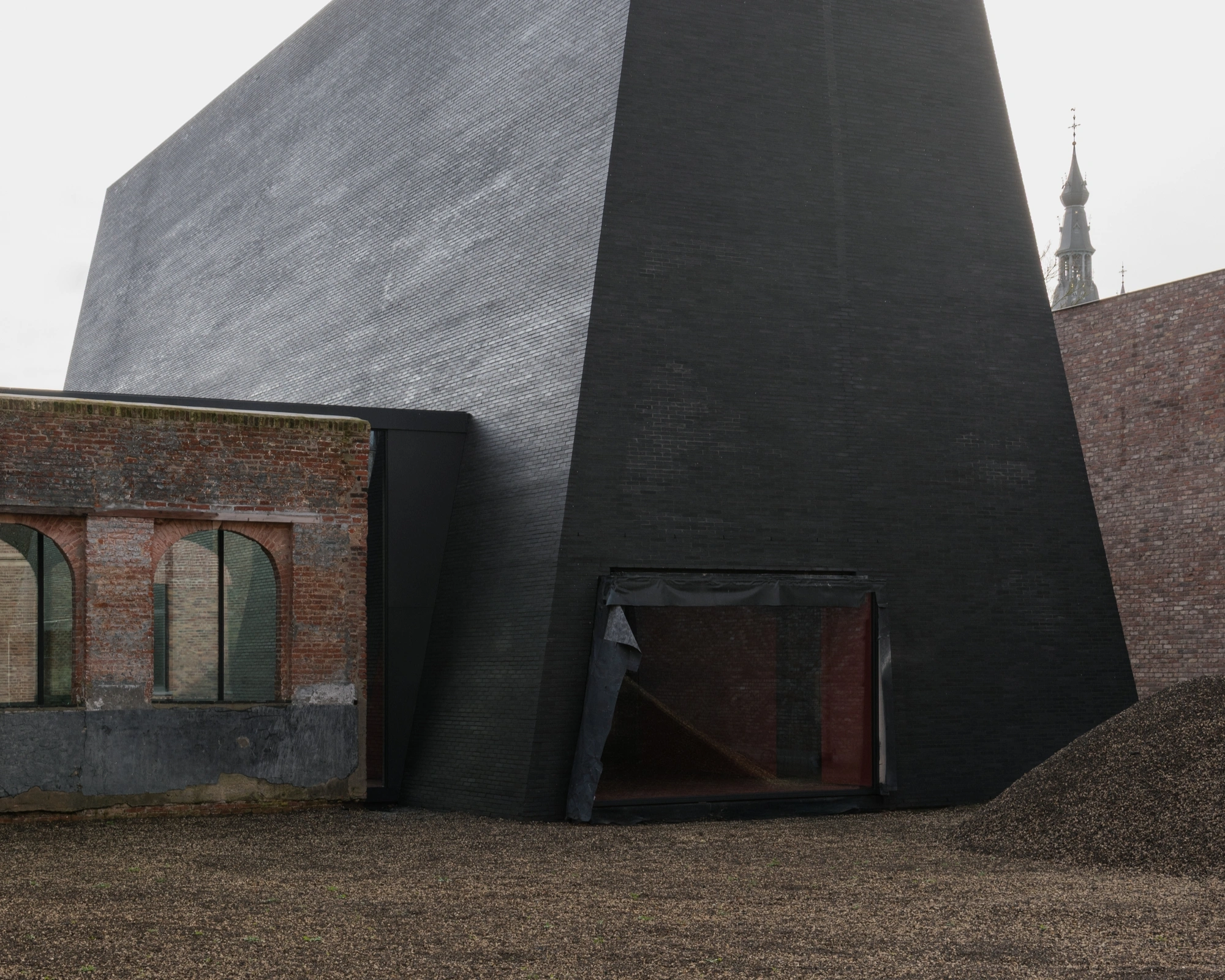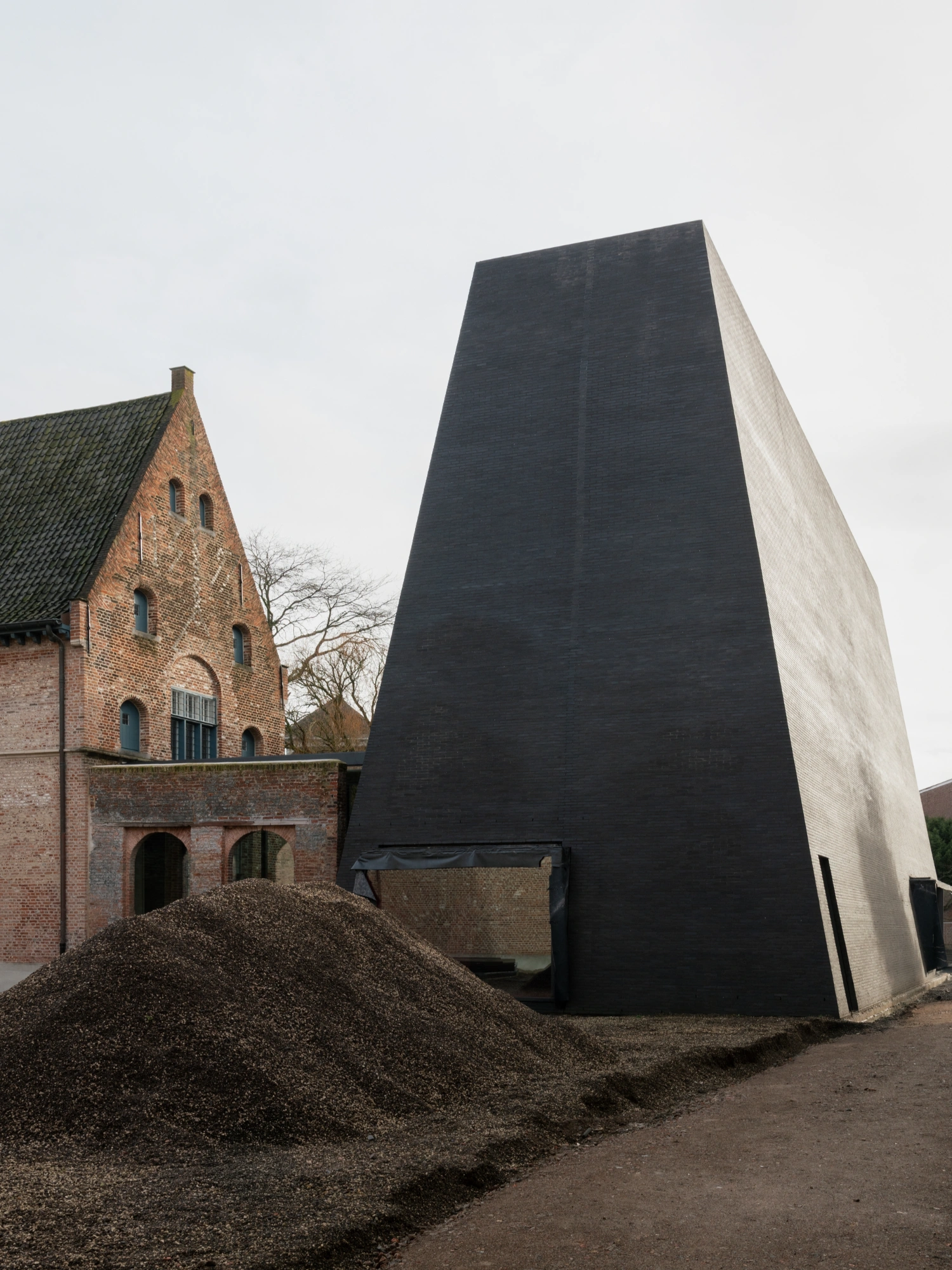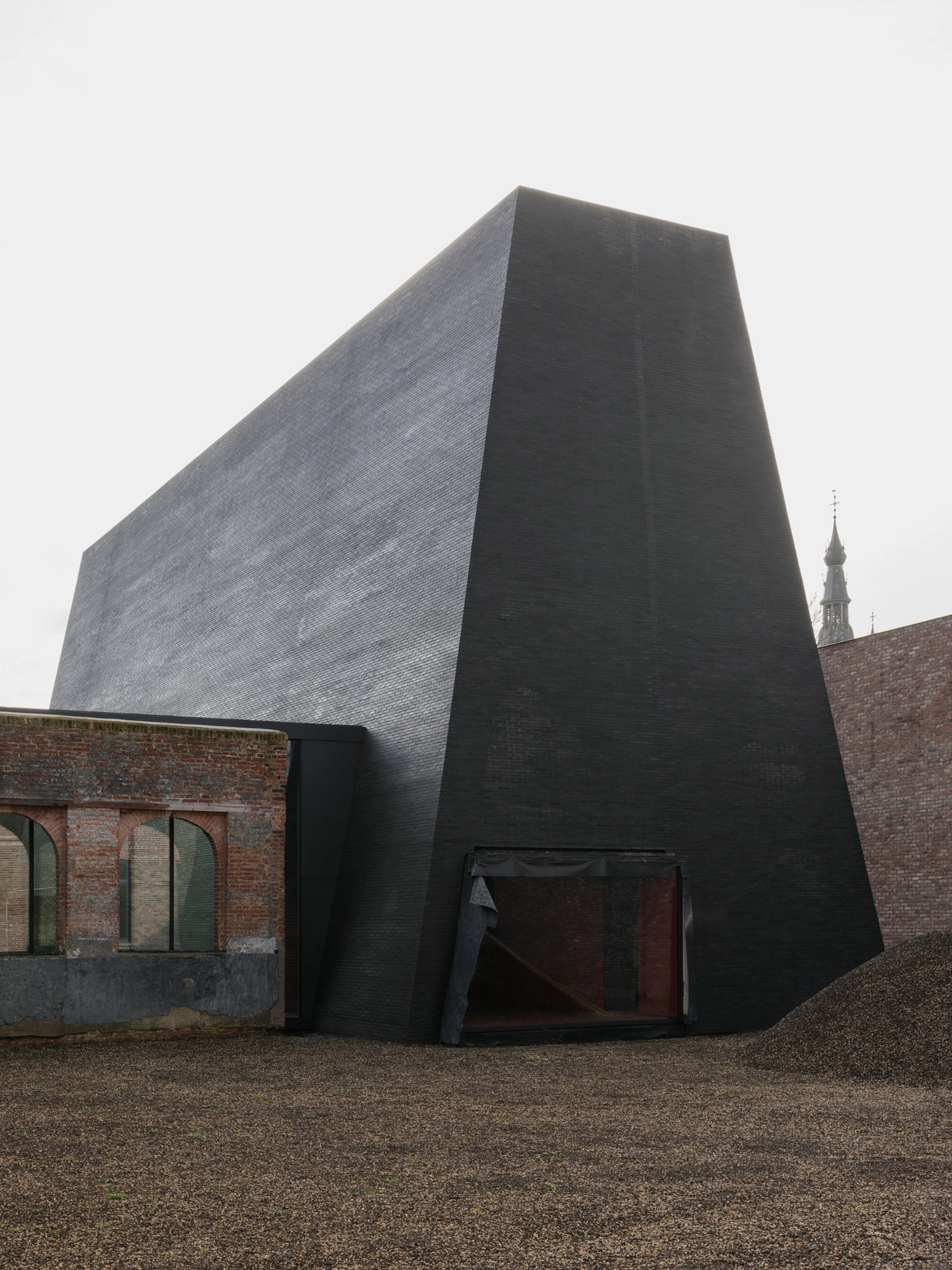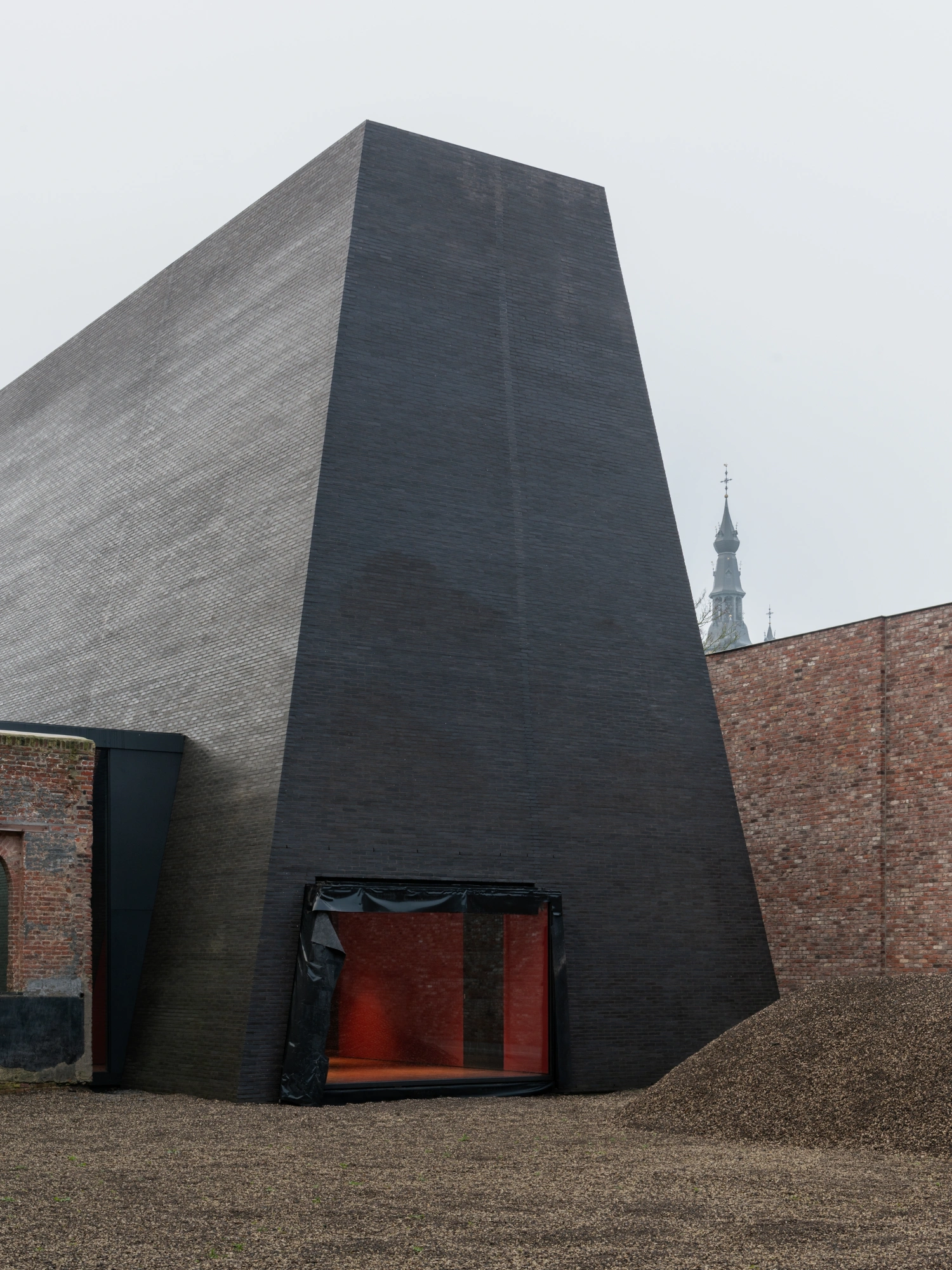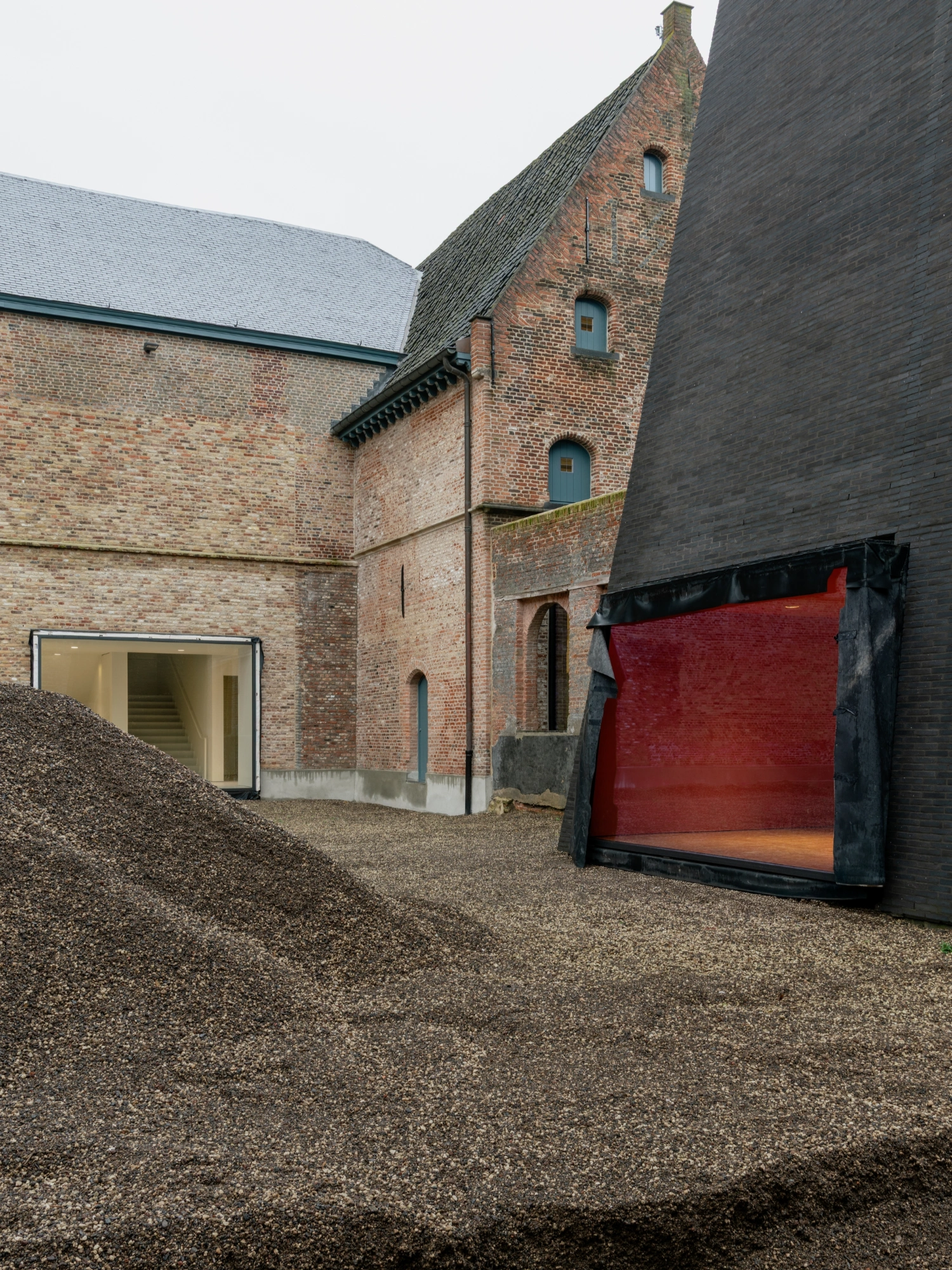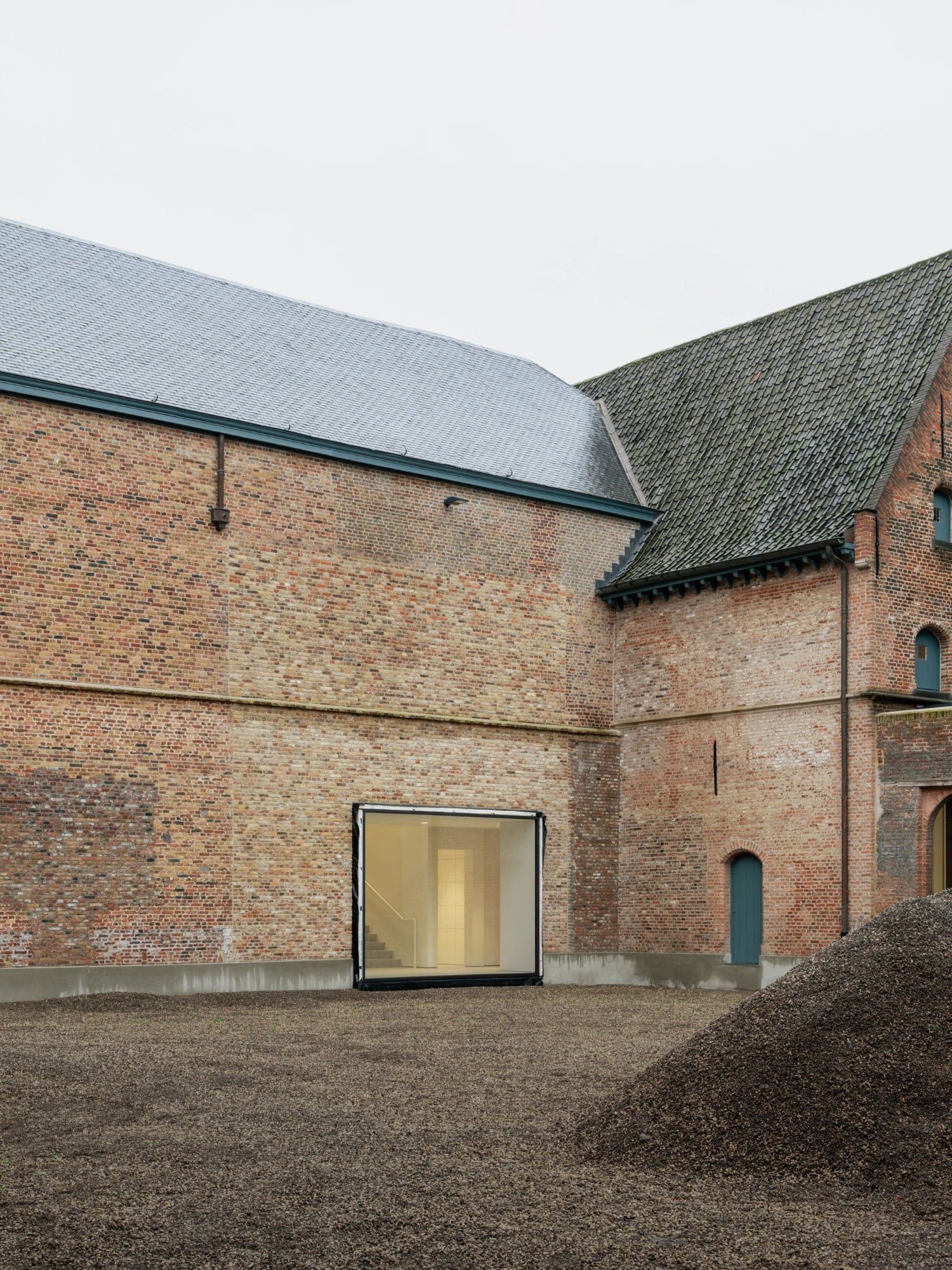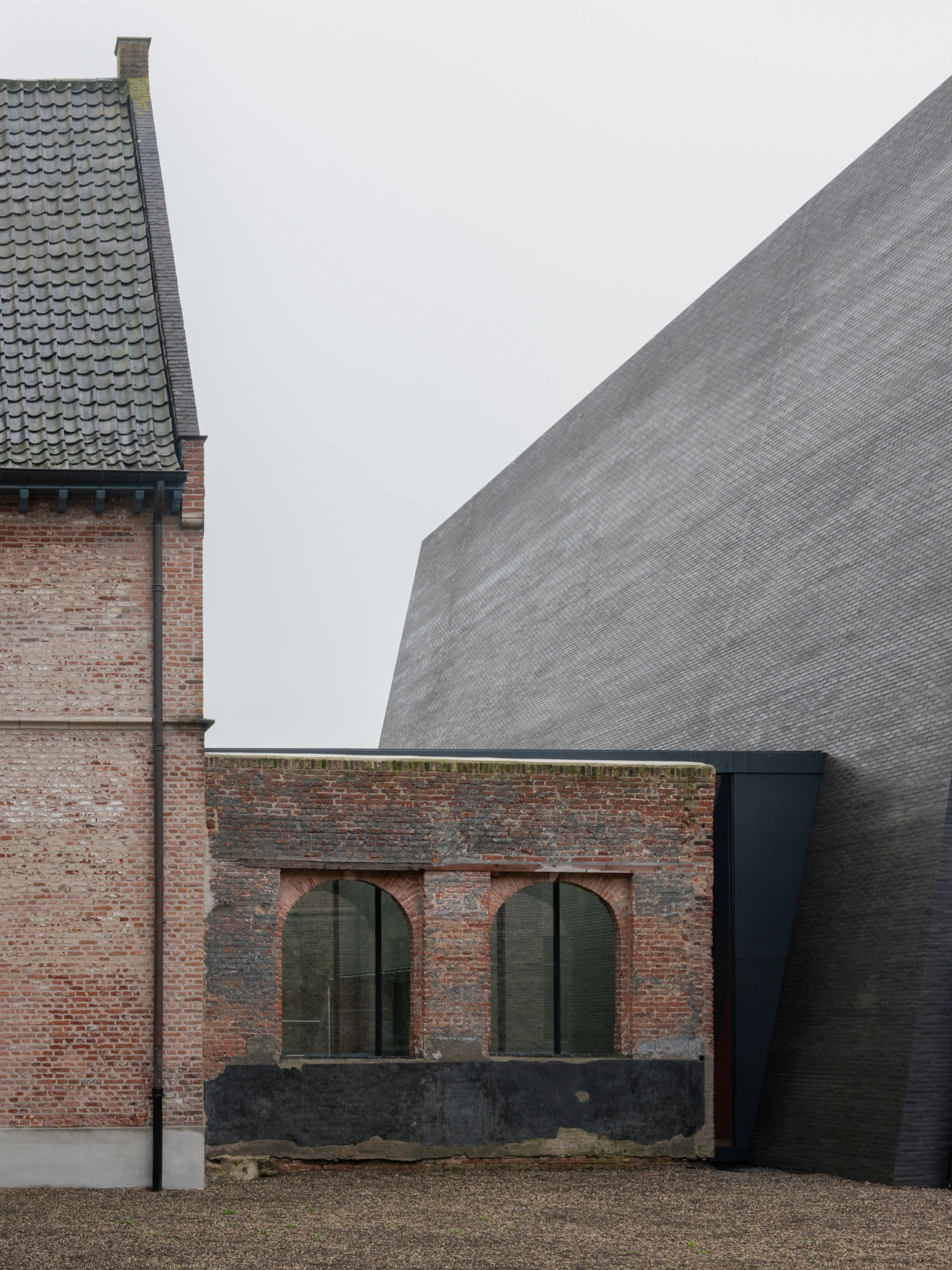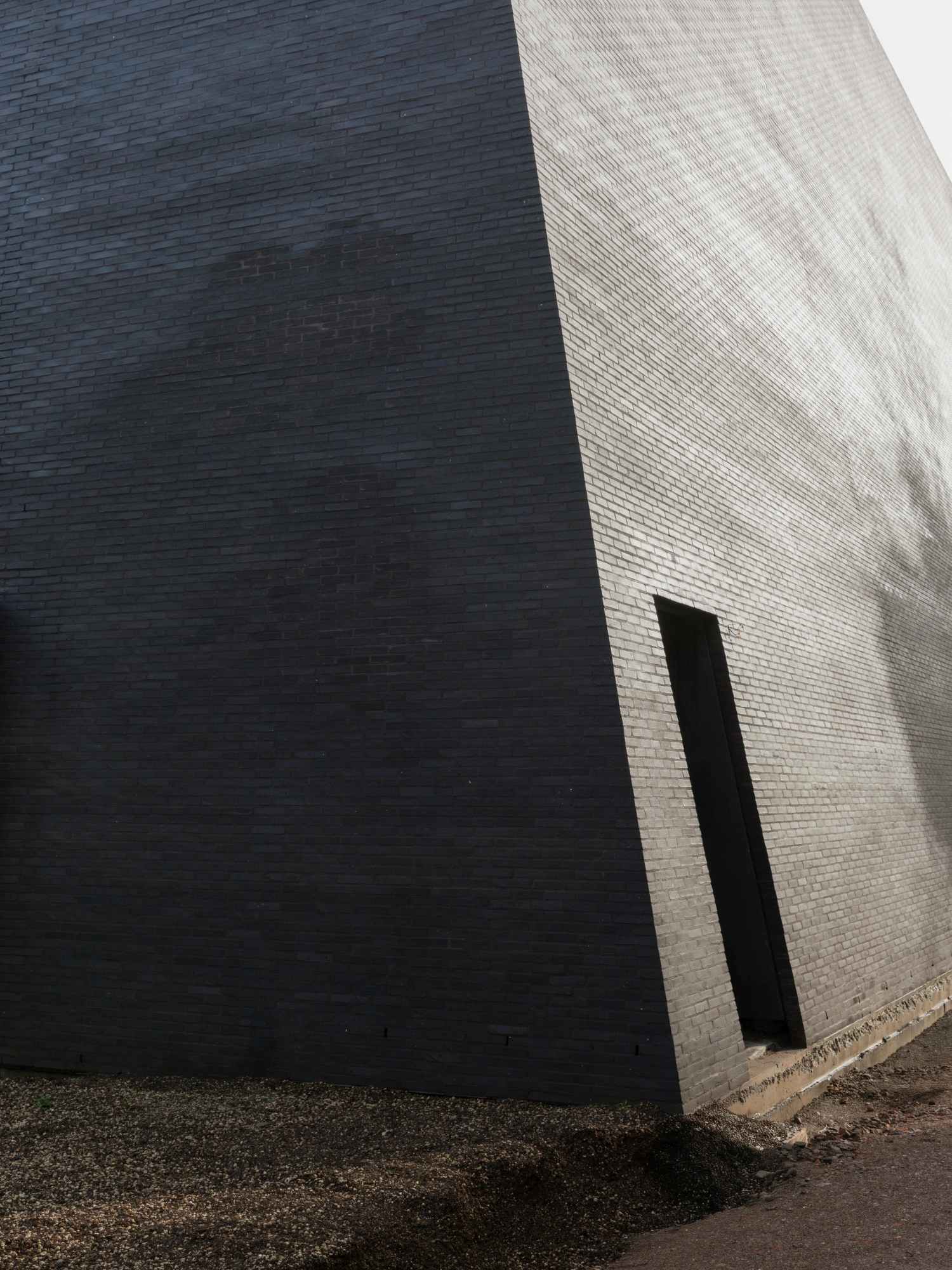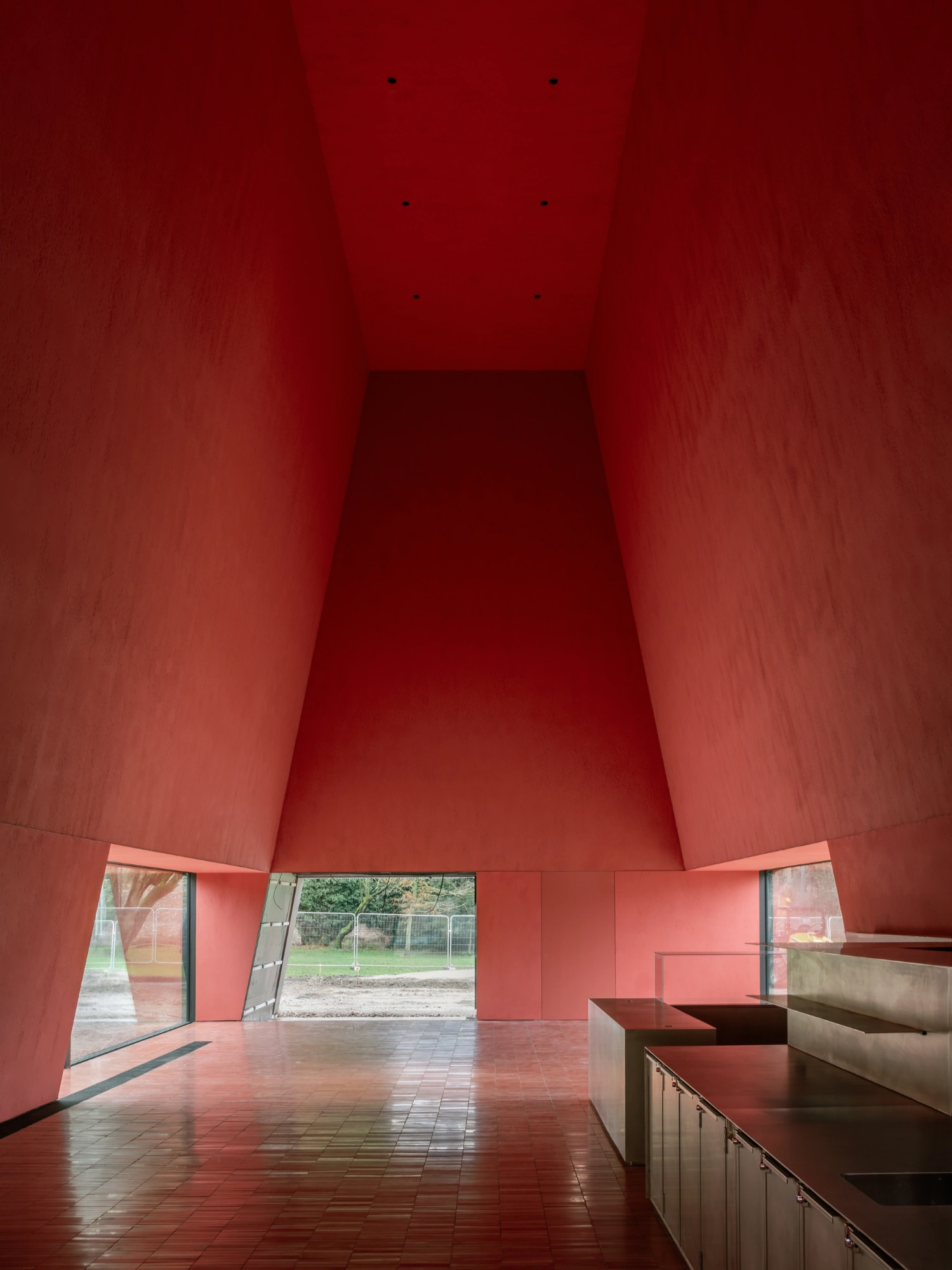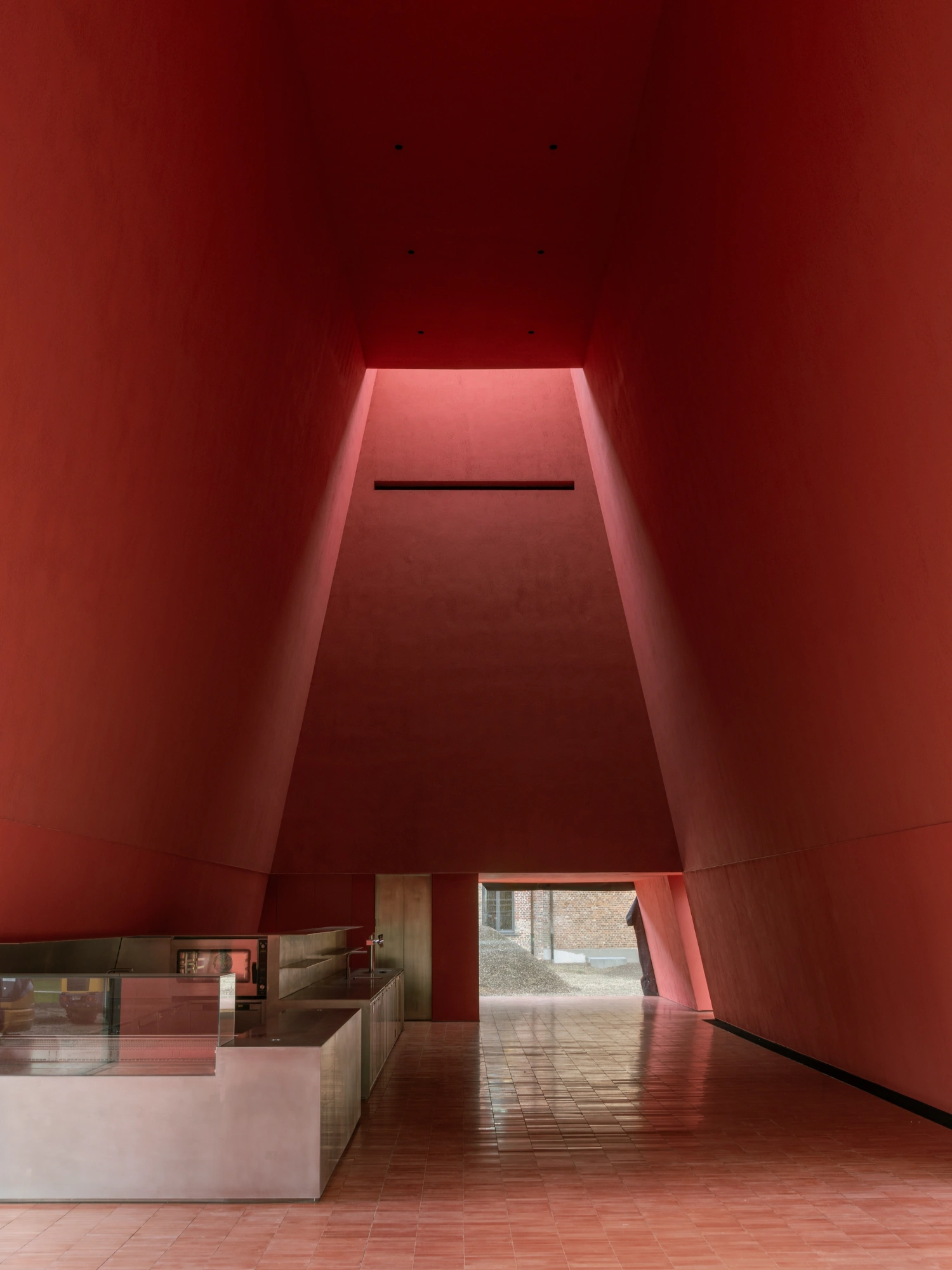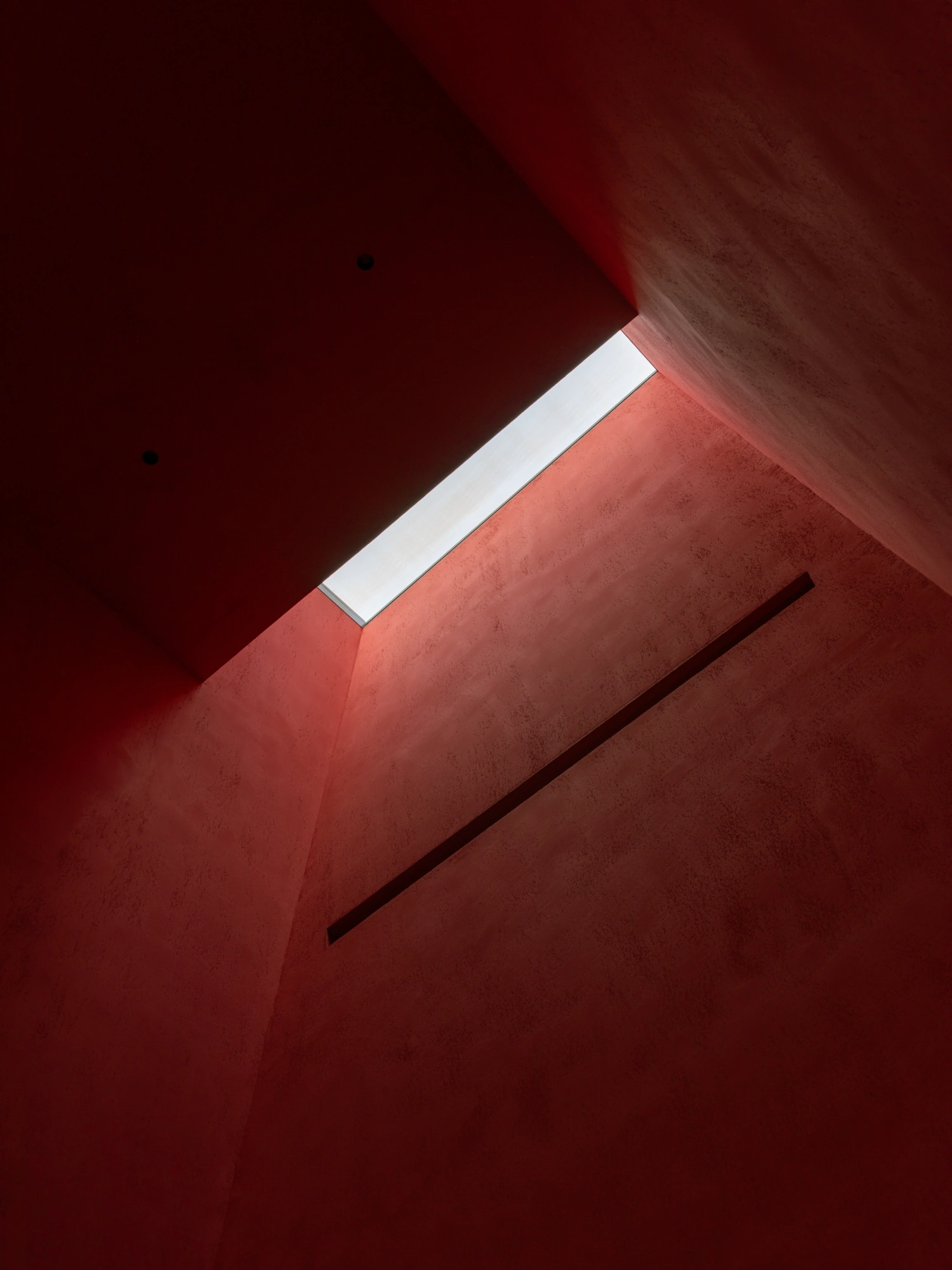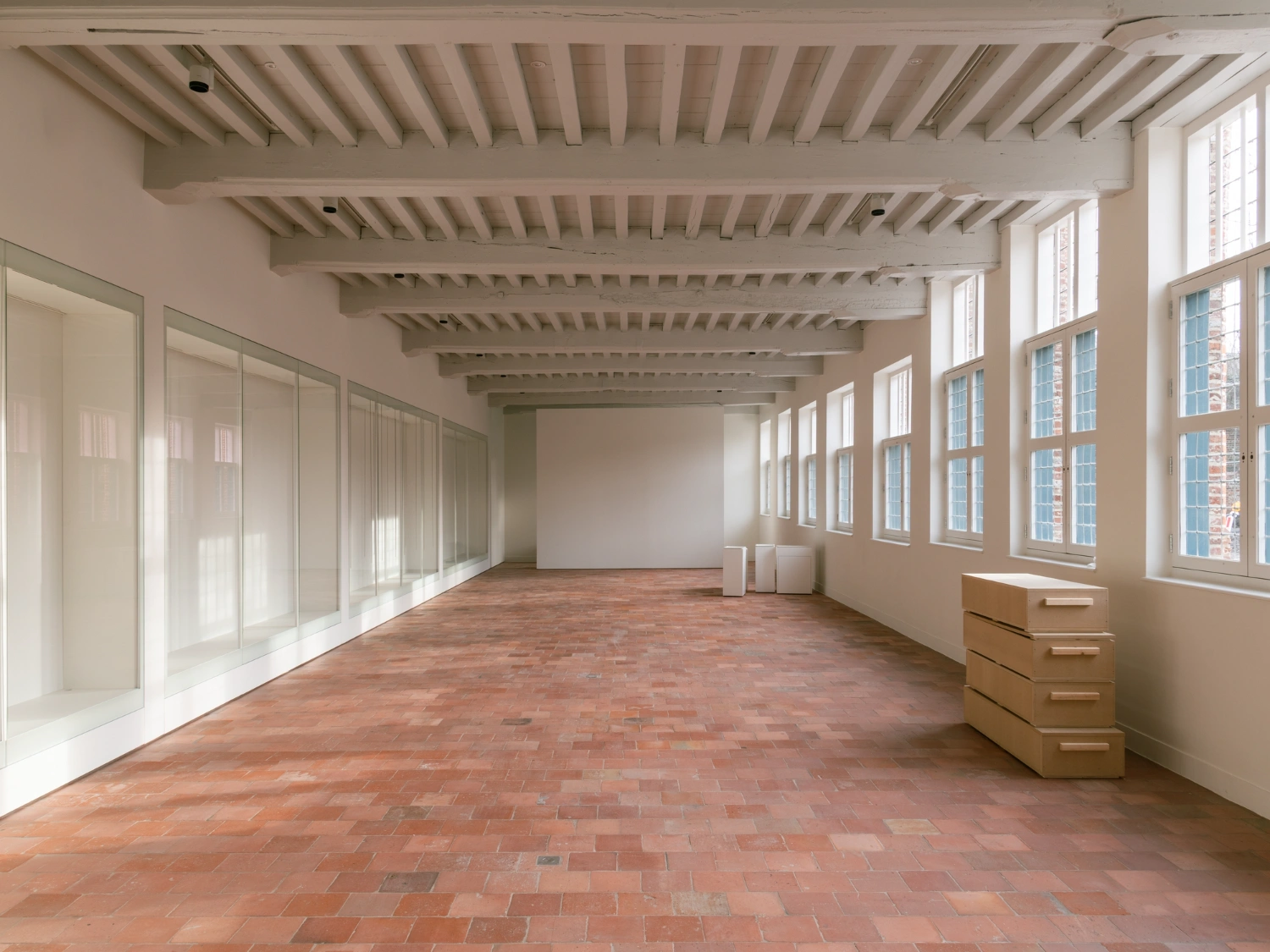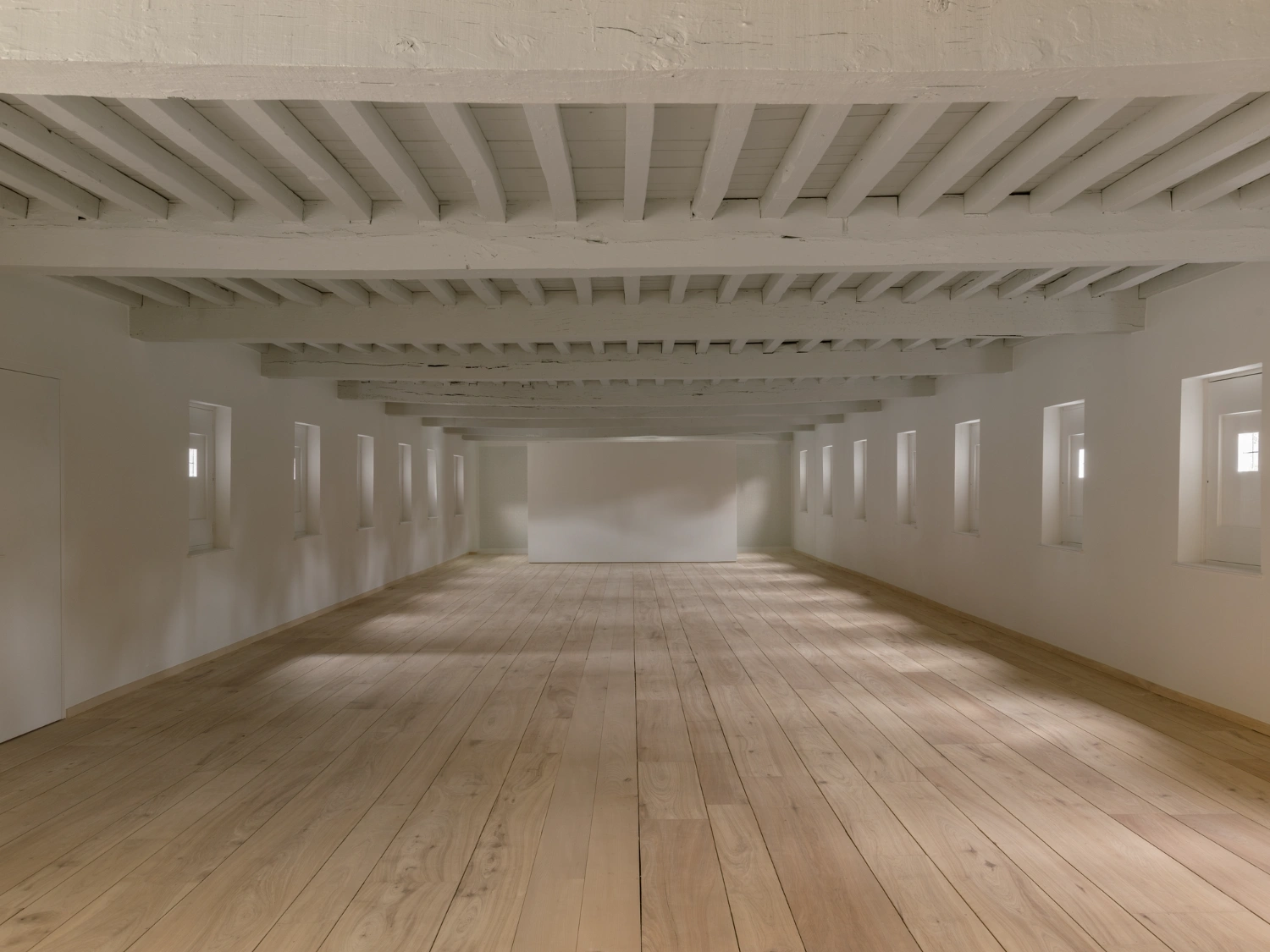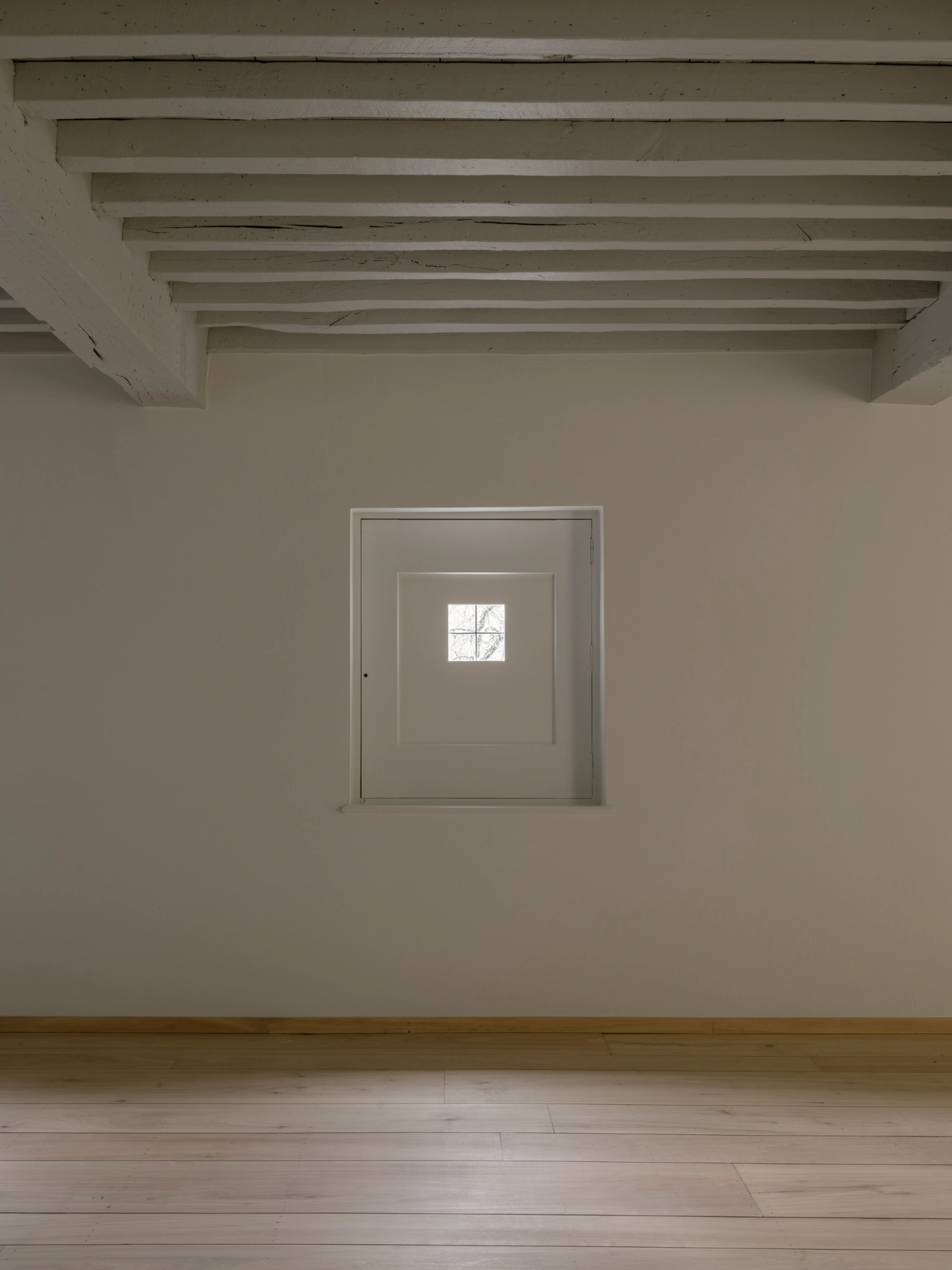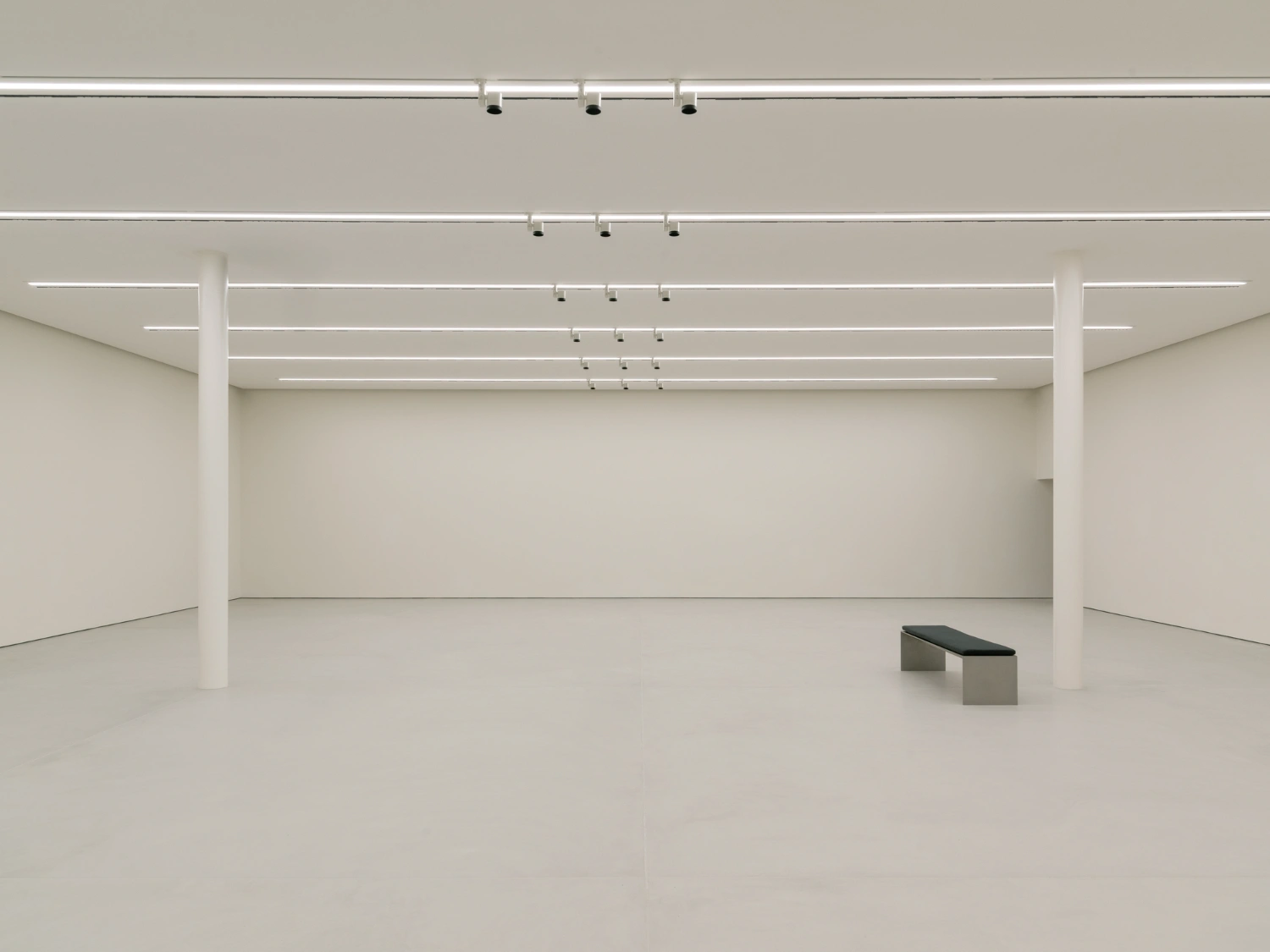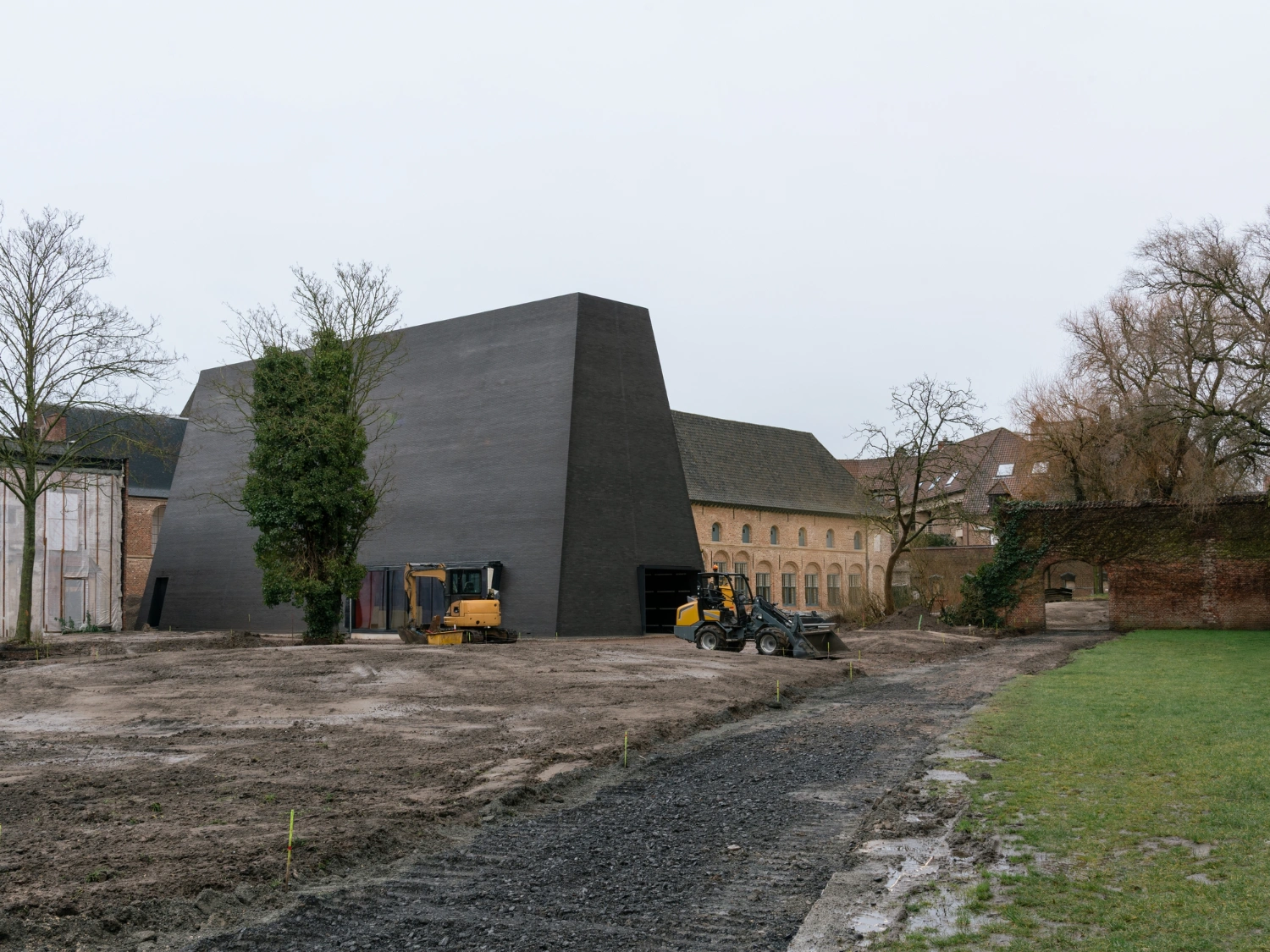In Kortrijk, Belgium, a centuries-old monastic complex has been reborn—not as a nostalgic relic of the past, but as a speculative architecture of civic possibility.
Abby Kortrijk, reimagined by Barcelona-based studio BAROZZI VEIGA, transforms the historic Groeninge Abbey into a porous, layered site for contemporary art and public life. It is neither a museum in the traditional sense nor a strictly conserved heritage site; instead, it performs as an urban living room, open to the rhythms of the Begijnhof Park and the people who inhabit it.
At the core of BAROZZI VEIGA’s intervention lies a quiet but radical interpretation of identity—not as something fixed, but as a shifting interplay between persistence and transformation. The architects unearth and clarify the spatial poetry of the original abbey chapel and dormitory wings, while introducing a subterranean exhibition space and a new park pavilion that speaks fluently with the past, yet resists mimicry. This is not pastiche but polyphony.
The architecture unfolds through a calibrated sequence of atmospheres. Above ground, the restored cloister and chapel offer contemplative grandeur; below, museum-grade white-box galleries provide a counterpoint of neutrality. Together, these spaces generate a new syntax for exhibition-making—where historical resonance and contemporary abstraction are not at odds but in dialogue. Importantly, visitors may move freely through many of these rooms without a ticket, allowing art to bleed into the everyday.
Anchoring this composition is the new park pavilion: dark-bricked, angular, and distinctly contemporary. Its pitched silhouettes echo the sloping roofs of the abbey, while its orthogonal logic draws from the cloister’s medieval geometry. But the materiality is decidedly of now. Custom bricks made from recycled construction materials give it both a tactile austerity and a monumental presence. This is architecture as artifact, and as actor.
Minimal yet meaningful interventions characterise the restoration of the dormitory: original windows and terracotta floors have been preserved, while a long vitrine quietly invites artists to respond to the city’s collection. The adjacent bar and restaurant area references monastic dining rituals with a communal table at its heart—a gesture that feels both intimate and civic.
The removal of accretive elements around the chapel allows the sixteenth-century volume to breathe again. Gone are the mezzanines and corridors; in their place, a restored verticality that reactivates the sacred spatial proportions. It’s a strategic subtraction that adds more than it takes away, returning the architecture to a state of clarity and openness conducive to large-scale installations or performative works.
Abby Kortrijk resists the easy binaries of old and new, museum and park, sacred and secular. BAROZZI VEIGA’s intervention is not about control but about calibration—inviting ambiguity, embracing contradiction, and reconfiguring the boundaries between art, architecture, and public life.

